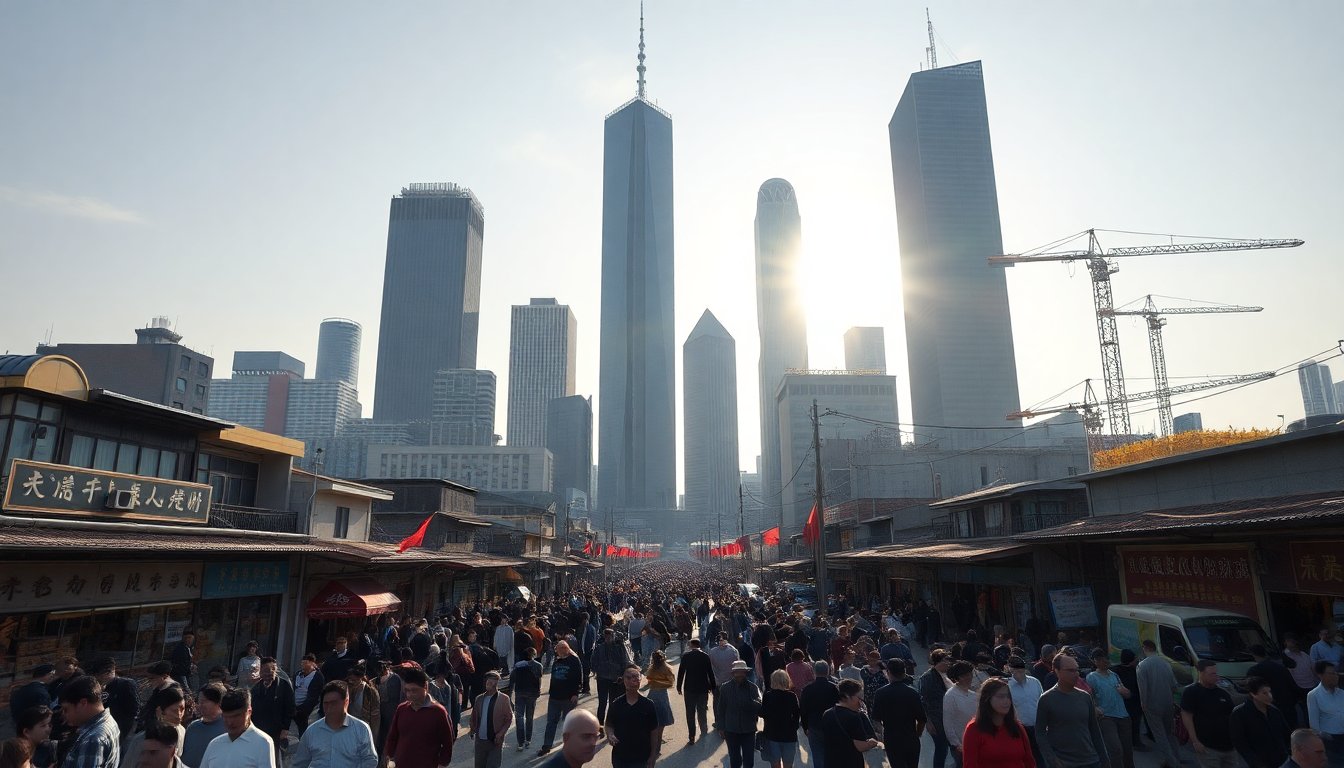Table of Contents
As the trade conflict between the United States and China continues, anticipated changes in China’s economic framework seem increasingly distant. Years of speculation about political and economic reforms in China have shifted to a sobering reality: hopes for significant liberalization are fading.
This article examines the complex relationship between the trade war and China’s economic strategies, highlighting the factors influencing its current state.
The facts
China’s economy remains a focal point for global analysts. Despite pressures from the trade war, the nation has shown some resilience.
However, concerns about its economic trajectory are growing. The trade war presents a dual challenge, imposing tariffs that hinder growth while exacerbating existing issues in China’s economic structure.
Debt levels and economic policies
Recent reports reveal that China is facing rising debt levels, posing significant risks to its economic stability, particularly against the backdrop of the trade war.
As the country seeks to sustain its economic growth, an increasing reliance on debt financing raises questions about long-term sustainability. Analysts warn that the current debt scenario could stifle economic growth, making reform efforts nearly unattainable.
Furthermore, the Chinese government has historically prioritized economic stability over liberal reforms.
This approach is evident in its response to the trade war, where immediate economic concerns take precedence over long-term reform strategies. The focus on maintaining economic control has led to a reluctance to adopt reforms that could foster innovation and enhance global competitiveness.
The consequences
The trade war also significantly impacts China’s political landscape. Expectations for political reform have diminished, as the government maintains a strong grip on power. The belief that external pressures could drive internal change has proven overly optimistic.
Instead, the trade war has reinforced the government’s position, resulting in a more insular governance approach.
Future prospects for reform
Looking ahead, the prospects for meaningful reform in China appear bleak. High debt levels, a lack of political will, and external pressures from the trade war suggest stagnation rather than transformation. While some analysts remain hopeful that future negotiations could yield positive changes, the current trajectory indicates a resistance to liberalization.
Given these developments, investors and stakeholders must reassess their strategies regarding China. Recognizing that economic and political reforms may not materialize as previously anticipated is essential for navigating this complex landscape. As the trade war persists, the implications for China’s economic future remain uncertain, necessitating careful evaluation of risks and opportunities.
The news broke at a crucial juncture, highlighting the fading hopes for political and economic reforms in China. As the nation confronts rising debt and a rigid political environment, prospects for liberalization seem increasingly distant. Stakeholders must remain vigilant and adaptable amid these evolving challenges, as the situation continues to develop.





